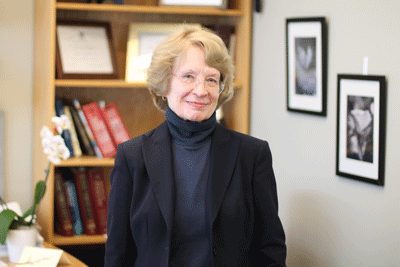
|
UMass Medical School researchers have developed a platform for constructing vaccines using virus-like particles, which one scientist says could be a promising—and safer—approach for a COVID-19 vaccine.
Trudy Morrison, PhD, professor of microbiology & physiological systems, said her work on a VLP-based vaccine for respiratory syncytial virus (RSV), which causes severe lower respiratory track disease in young children and the elderly, could be adapted to COVID-19. And it would avoid some of the problems inherent in developing vaccines from inactivated or live viruses.
Dr. Morrison is the featured speaker at the Medical School’s Hudson Hoagland Society’s 35th annual meeting on Wednesday, May 20, at 4 p.m., addressing the theme, “Confronting the Coronavirus Crisis.” RSVP to events@umassmed.edu to join the online meeting.
Morrison has received a Worcester Foundation Research Grant, which is supported by gifts to the Hudson Hoagland Society, to pursue studying VLPs as vaccines for coronavirus.
VLPs are virus-sized structures composed of repeating copies of structural proteins found in infectious virus particles, Morrison explained. They are structurally similar to virus particles, except they have no genome and are, therefore, not infectious. VLPs can also be made in large quantities, which would provide a ready supply.
Morrison and colleagues have demonstrated in animal models that VLPs using the core proteins of a similar virus, Newcastle disease virus, are safe and effective as a maternal vaccine for protecting offspring from RSV. Vaccine candidates for SARS-CoV-2 would need to be tested in animal models to evaluate safety and effectiveness.
Based on her long history of work with an infection, RSV, that impacts newborns and children, Morrison is concerned that appropriate attention be paid to developing vaccines targeted for different-aged populations.
“The issues for vaccinating children are very different from issues that can affect the elderly,” she said.
Very young children, for example, may not have an immune system mature enough to make protective antibodies in response to a particular vaccine; thus, maternal vaccination is a potential alternative for protection of infants.
At the other end of the spectrum, Morrison said, the decline of the immune response in elderly people in turn can reduce their responses to some vaccines. Vaccines and protocols need to be tailored to this population as well.
“So you have to target the population you’re really going after,” Morrison said. “There is not a universal vaccine that is going to work for everybody.”